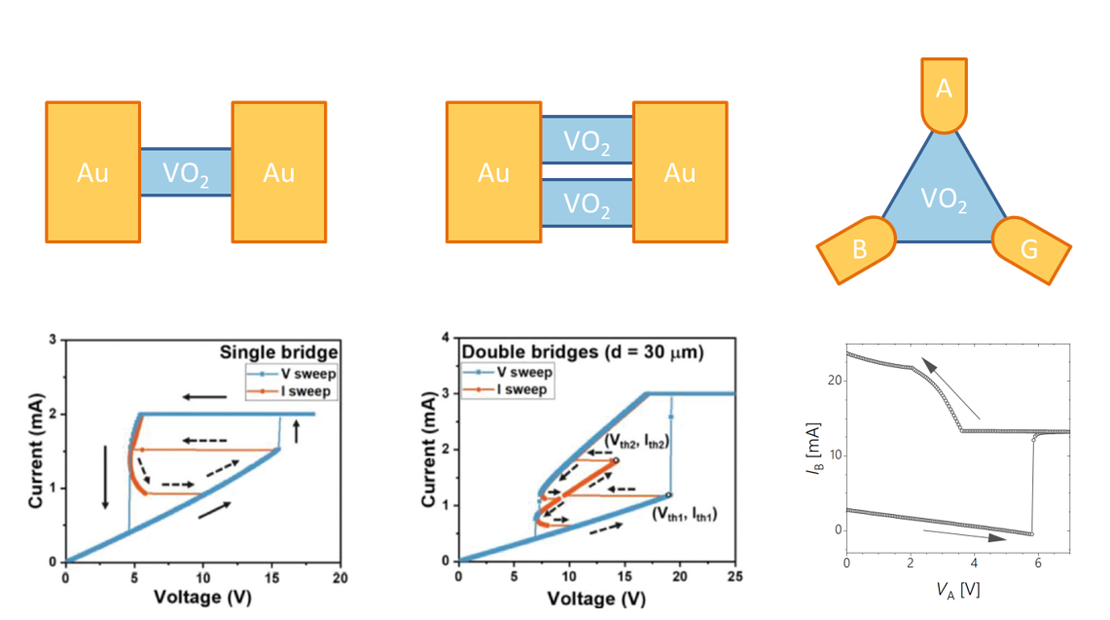Memristive devices (memristors) have a resistance value that depends on the history of the device. They can attain multiple states, which either remain or reset after removing the stimulus (e.g., voltage) to the device. In the case they reset (volatile switching), memristors can be used to realize a simple oscillating circuit [2]. In the case they remain (non-volatile switching), a memristor can be used as a weight connecting two other devices. These two functionalities are exactly what is needed for realizing artificial neural networks in a physical system.
Our main focus is on the material vanadium dioxide (VO2). It is an insulator at room temperature, but undergoes an insulator-to-metal transition upon minor heating, lowering its resistance by up to 4 orders of magnitude. This transition can also be triggered by Joule heating, yielding the hysteretic I(V) characteristic in the left panel below. Compared to other memristor realizations – e.g., phase-change materials, ionic-filament devices – VO2 devices are very stable and, in principle, very fast and scalable down to nanometer dimensions. This transition is volatile, because the initial state is recovered after a voltage sweep.
We recently started studying alternative device geometries, as shown in the middle and right panels below. By adding a second (or third, fourth,…) VO2 ‘bridge’ in parallel to a first one, we could demonstrate stabilizing as many states as there are bridges in this device – middle panel [3]. Instead of adding bridges, one can also add electrodes, which allows to trigger a non-volatile switch between two electrodes using the third electrode – right panel. Ongoing work concerns revealing the nature of these switches, engineering the material and devices to enhance energy efficiency, and putting them into networks to realize basic computational tasks.
 Geometry-induced device functionality. Top panels: device geometry. Bottom panels: I(V) characteristics of these devices.
Geometry-induced device functionality. Top panels: device geometry. Bottom panels: I(V) characteristics of these devices.
[2] N. Shukla et al., “Synchronized charge oscillations in correlated electron systems”, Scientific Reports 4, 4964 (2014)
[3] X. Gao, T.J. Roskamp, T. Swoboda, C.M.M. do Rosário, S. Smink, M. Muñoz Rojo, H. Hilgenkamp, “Multibridge VO2-Based Resistive Switching Devices in a Two-Terminal Configuration”, Adv. Elec. Mater. 2300304 (2023)
If you want to know more about memristive devices, please get into touch with one of us:
dr.ir. A.E.M. Smink (Sander)
Assistant Professor
D.H. Janse van Rensburg (Daniel)
PhD Candidate

 Geometry-induced device functionality. Top panels: device geometry. Bottom panels: I(V) characteristics of these devices.
Geometry-induced device functionality. Top panels: device geometry. Bottom panels: I(V) characteristics of these devices.